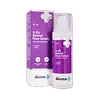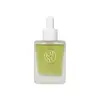What's inside
What's inside
 Key Ingredients
Key Ingredients

 Benefits
Benefits

 Concerns
Concerns

 Ingredients Side-by-side
Ingredients Side-by-side

Water
Skin ConditioningEthylhexyl Methoxycrylene
Skin ConditioningDiethylhexyl Carbonate
EmollientEthoxydiglycol
HumectantGlycerin
HumectantTetrahexyldecyl Ascorbate
AntioxidantDimethylmethoxy Chromanol
AntioxidantPhysalis Angulata Extract
Skin ProtectingCaprylic/Capric Triglyceride
MaskingCyclopentasiloxane
EmollientPhenyl Trimethicone
Skin ConditioningDimethiconol
EmollientC12-15 Alkyl Benzoate
AntimicrobialDimethicone Crosspolymer
Emulsion StabilisingHydroxyethyl Acrylate/Sodium Acryloyldimethyl Taurate Copolymer
Emulsion StabilisingPhenoxyethanol
PreservativeEthylhexylglycerin
Skin ConditioningMethyl Glucose Sesquistearate
EmollientBehenyl Alcohol
EmollientTrisodium Ethylenediamine Disuccinate
Pentylene Glycol
Skin Conditioning4-T-Butylcyclohexanol
MaskingPentaerythrityl Distearate
EmulsifyingBHT
AntioxidantRetinol
Skin ConditioningPolysorbate 20
EmulsifyingSodium Metabisulfite
AntioxidantWater, Ethylhexyl Methoxycrylene, Diethylhexyl Carbonate, Ethoxydiglycol, Glycerin, Tetrahexyldecyl Ascorbate, Dimethylmethoxy Chromanol, Physalis Angulata Extract, Caprylic/Capric Triglyceride, Cyclopentasiloxane, Phenyl Trimethicone, Dimethiconol, C12-15 Alkyl Benzoate, Dimethicone Crosspolymer, Hydroxyethyl Acrylate/Sodium Acryloyldimethyl Taurate Copolymer, Phenoxyethanol, Ethylhexylglycerin, Methyl Glucose Sesquistearate, Behenyl Alcohol, Trisodium Ethylenediamine Disuccinate, Pentylene Glycol, 4-T-Butylcyclohexanol, Pentaerythrityl Distearate, BHT, Retinol, Polysorbate 20, Sodium Metabisulfite
Water
Skin ConditioningLactic Acid
BufferingDipropylene Glycol
HumectantGlycerin
HumectantButylene Glycol
HumectantMethylpropanediol
SolventSodium Hydroxide
Buffering1,2-Hexanediol
Skin ConditioningRosmarinus Officinalis Leaf Extract
AntimicrobialHydroxyethylcellulose
Emulsion StabilisingSuccinic Acid
BufferingPropanediol
SolventEthylhexylglycerin
Skin ConditioningMelia Azadirachta Leaf Extract
Skin ConditioningHydrolyzed Gardenia Florida Extract
AntioxidantHydrolyzed Malt Extract
Skin ConditioningHydrolyzed Viola Tricolor Extract
Skin ProtectingGlyceryl Acrylate/Acrylic Acid Copolymer
HumectantMelia Azadirachta Flower Extract
Skin ConditioningAllantoin
Skin ConditioningBetaine
HumectantPanthenol
Skin ConditioningHyaluronic Acid
HumectantHydrolyzed Hyaluronic Acid
HumectantSodium Hyaluronate
HumectantWater, Lactic Acid, Dipropylene Glycol, Glycerin, Butylene Glycol, Methylpropanediol, Sodium Hydroxide, 1,2-Hexanediol, Rosmarinus Officinalis Leaf Extract, Hydroxyethylcellulose, Succinic Acid, Propanediol, Ethylhexylglycerin, Melia Azadirachta Leaf Extract, Hydrolyzed Gardenia Florida Extract, Hydrolyzed Malt Extract, Hydrolyzed Viola Tricolor Extract, Glyceryl Acrylate/Acrylic Acid Copolymer, Melia Azadirachta Flower Extract, Allantoin, Betaine, Panthenol, Hyaluronic Acid, Hydrolyzed Hyaluronic Acid, Sodium Hyaluronate
 Reviews
Reviews

Ingredients Explained
These ingredients are found in both products.
Ingredients higher up in an ingredient list are typically present in a larger amount.
Ethylhexylglycerin (we can't pronounce this either) is commonly used as a preservative and skin softener. It is derived from glyceryl.
You might see Ethylhexylglycerin often paired with other preservatives such as phenoxyethanol. Ethylhexylglycerin has been found to increase the effectiveness of these other preservatives.
Glycerin is already naturally found in your skin. It helps moisturize and protect your skin.
A study from 2016 found glycerin to be more effective as a humectant than AHAs and hyaluronic acid.
As a humectant, it helps the skin stay hydrated by pulling moisture to your skin. The low molecular weight of glycerin allows it to pull moisture into the deeper layers of your skin.
Hydrated skin improves your skin barrier; Your skin barrier helps protect against irritants and bacteria.
Glycerin has also been found to have antimicrobial and antiviral properties. Due to these properties, glycerin is often used in wound and burn treatments.
In cosmetics, glycerin is usually derived from plants such as soybean or palm. However, it can also be sourced from animals, such as tallow or animal fat.
This ingredient is organic, colorless, odorless, and non-toxic.
Glycerin is the name for this ingredient in American English. British English uses Glycerol/Glycerine.
Learn more about GlycerinWater. It's the most common cosmetic ingredient of all. You'll usually see it at the top of ingredient lists, meaning that it makes up the largest part of the product.
So why is it so popular? Water most often acts as a solvent - this means that it helps dissolve other ingredients into the formulation.
You'll also recognize water as that liquid we all need to stay alive. If you see this, drink a glass of water. Stay hydrated!
Learn more about Water